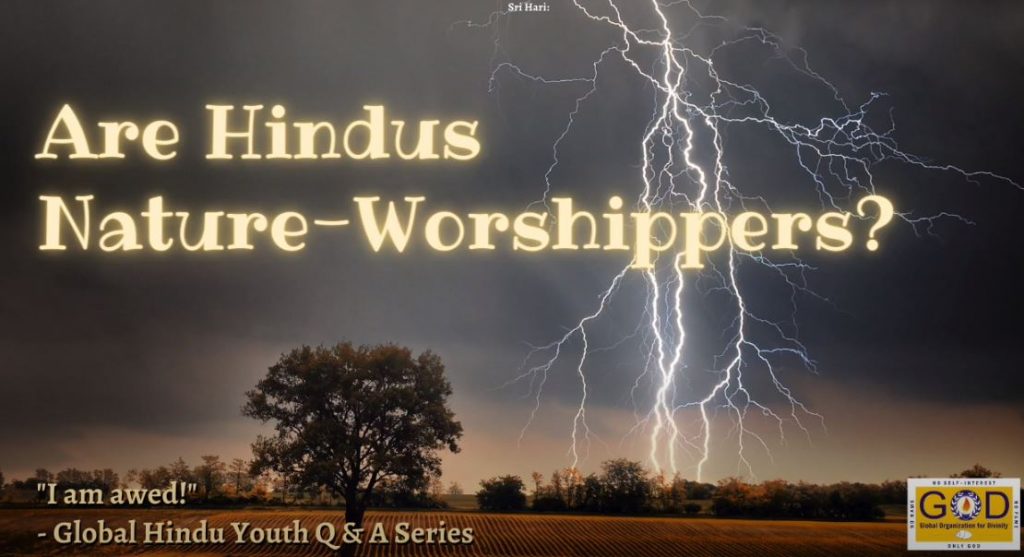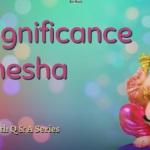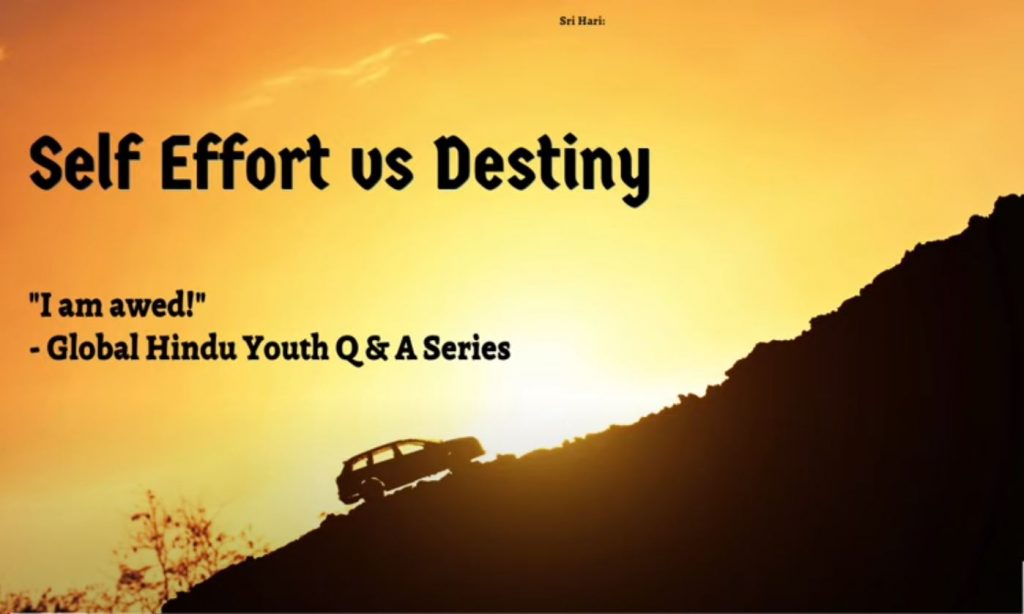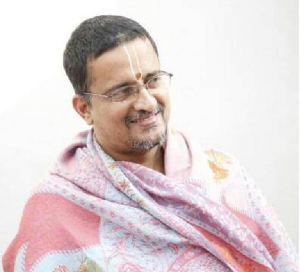“I Am Awed!” Hindu Youth Q & A Series
Body, mind, and the soul – are these three different? Do they all refer to the same “me”? and what happens after death?
A series of “Little Questions and Lucid Answers” sessions were conducted to explore the greatness and depth of Hinduism through questions posed by global Hindu Youth to Sri Ramanujamji.
The excerpts of each of these questions and answers will be presented every month by our youth.
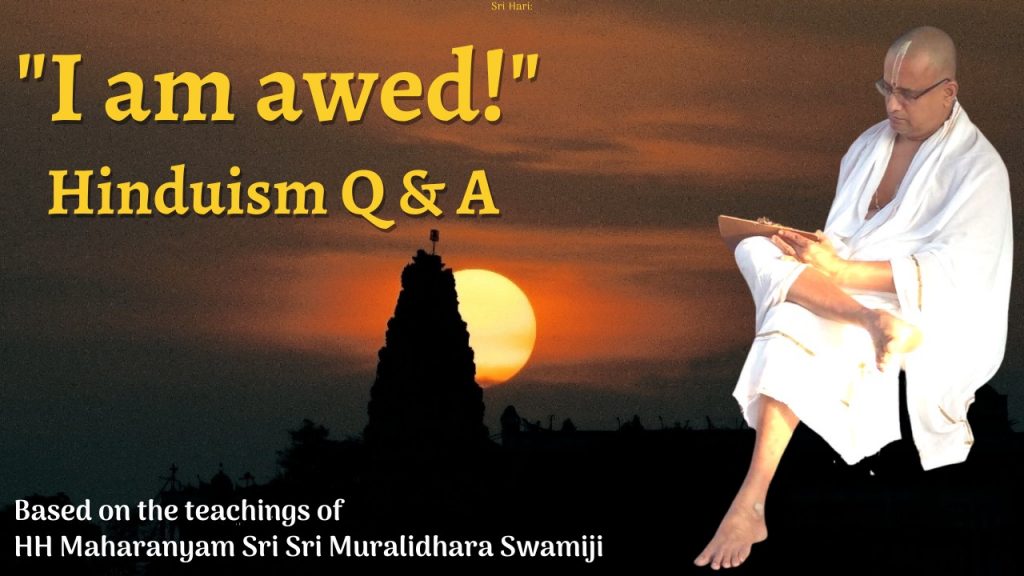
People often refer to the body, mind, and the soul – are these three different? Do they all refer to the same “me”? Sri Ramuji Explains…
Krishna, in the Bhagavad Gita, explains this concept to Arjuna by describing how our individual identities are layered into three distinct sections: the outer physical body, the “astral” body (mind), and the innermost “causal” body. The physical body, similar to a jacket that one would wear on the outside, pertains to our five different senses. The sounds we hear through our ears, the sights we witness through our eyes, the aromas we smell through our nose, etc., are all related to this “outer jacket”. As we progress deeper, we delve into our astral body, akin to a shirt worn under the jacket. This is the layer that deals with all of our cognitive abilities such as memory, thought, emotion, reason, understanding, etc. At the heart of it all, however, is our “causal” body or Consciousness, is our true self and also which represents our birth imprint that we carry from our earlier births, called latent impressions.
While we are awake and fully conscious, our various inner layers are working in tandem. For example, our mind (astral body) expresses hunger. The message released from our mind then gets passed on to our physical body, which reaches out our hand to grab an apple to eat. Here, we see the cause + effect relationship in play as the commands from our mind acted as the catalyst for the movements of our physical body. One interesting aspect of this relationship is that the cause is always subtler than the effect; something as subtle as a thought in our mind results in our physical actions. If we go even deeper, our mental thoughts are controlled by our causal body, which has the latent impressions that trigger our thoughts, which lead to physical action.(Our genes, dna, etc. are physical expressions of this subtle causal body.)
In our Sanatana Dharma, rishis have explained another way to picture the actions of each of our three inner bodies. As was mentioned earlier, the physical body, the astral body, and our causal body are all working together while we are in a waking state (jaagrath). But once we start sleeping, we often enter into a dream-like state (swapna). This state is quite unique, because we are able to experience the five senses without our physical body. We may see various things in our dreams, but our physical eyes remain closed. We may walk around various places in our dream, but our physical legs remain stationary. Although our physical body remains immobile, all of this is the activity of our inner astral body. Lastly, beyond this lies the third state of deep, dreamless sleep (shushupti). When we are in this state, there is complete absence of any movement or thought, but we are aware of our existence. Are we able to recollect anything that happened during the time we were in deep sleep? No. But we do remember having had a peaceful ‘experience’ after we wake up. This is because only the causal body or consciousness existed at that time.
It is astonishing to witness the genius of our great rishis and mahatmas who were able to deduce and break down such complex concepts in ways that allow all of us to understand.
Also watch Sri Ramuji answer this question on our “I Am Awed” short video series on our Namadwaar E-Satsang YouTube channel – https://www.youtube.com/watch?v=BK61gULz1OY&list=PLf2GTja1Pr3MIGF9TiFxemag89ZwPExvP&index=5https://www.youtube.com/watch?v=7svbv4E5pIs
Now…..What happens to us after death? Sri Ramuji explains…
As humans, we have the ability to experience this world in a variety of ways. When we are awake, we interact with the world around us using our five senses and our physical body. While asleep, however, we become detached from this physical world. Instead, our minds seek to reconcile our unresolved desires through dreams, which we explore through an ‘astral body.’ The process of waking up re-establishes this connection between the physical and astral body. The reason for this return, as observed by siddha purushas, is that there is a subtle silver thread–a bond– that binds the physical body to the astral body, forcing the astral body to return to the same physical body on waking up.
Deeper yet lies the causal body, which represents one’s true self and transcends any one physical lifetime. This causal body must remain connected to the physical and astral bodies during one’s lifetime. Death alone holds the power to sever this connection with the physical body, after which the causal and astral bodies are required to find a new physical body to continue the cycle of life and death. Until one truly realizes God, the causal & astral bodies will remain locked in this eternal cycle. With every death of the physical body (akin to discarding a worn out coat), the causal body, along with its baggage of karma manifested in the astral body, begins a journey to find a new physical body (a new coat) that accurately reflects it’s karma and state of mind. One’s karma is the aggregate result of activities conducted in each life and remains connected to the causal body through multiple lifetimes.
It is also important to note that, after death, the causal body does not immediately take up another physical body. As such, it revolves around its former physical body for days; the reason Hindus perform rituals after one’s death is to guide this causal body away from its old physical body to the correct celestial world(s). It is in such worlds in an interim state where parts of positive equity from one’s life can be spent for rewards and some negative debts can be settled. After undergoing these experiences, the causal body is able to manifest itself on this planet once more with its remaining karma (both positive and negative).
An important question remains: how is the causal body able to choose the correct physical body that reflects its karma? Until the moment that true self-realization occurs, the causal body will, after every death, continue searching for an optimal physical body in which to manifest. It will choose the right kind of life form (insects, animals, plants, human, etc.), and the right kind of family, etc. in which it can accurately express its accumulated tendencies. How can it find this right kind of life form and circumstances? It is divinity that guides every one of the trillions of life forms on this planet to its ideal physical body so that it can continue to progress in its journey.
The beauty of a human birth lies in the unique ability to attain self-realization, a feat unachievable by any other life form. It is for this reason that many mahatmas stress the importance of utilizing our human birth to progress towards that goal and to release our causal body from the cycle of rebirth.
Since the Divine Name is consciousness, when our time comes to leave this world, it can help us realize that the physical body is only a coat, and can help us stop the whole cycle and achieve this moksha or liberation. The wonderful philosophy of our Sanatana Dharma expounds upon the beauty of life; it is extremely precious, and we must be wary not to waste it away.
Also watch Sri Ramuji answer this question on our “I Am Awed” short video series on our Namadwaar E-Satsang YouTube channel – https://www.youtube.com/watch?v=Om9JTshamnQ&list=PLf2GTja1Pr3MIGF9TiFxemag89ZwPExvP&index=5
Rithwik Raman, 18 yrs and Vamsiraman, 21 Years
Richmond, Virginia
Excerpts from Sri Ramanujamji’s “Little Questions and Lucid Answers” Q&A series.
